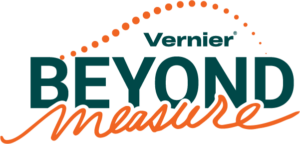
Sharing ideas and inspiration for engagement, inclusion, and excellence in STEM

Anticipating a projected 10.8% growth in STEM occupations over the next decade, the STEM Academy of Hollywood, a pilot high school in Hollywood, California, emphasizes career-focused education. The school centers on two career pathways: Engineering and Biomedical Science, utilizing curriculum from Project Lead the Way. Regine Rosas, who comes from a biomedical engineering background, teaches physics and electives in the engineering pathway to help students prepare for the evolving STEM landscape.
Rosas, now in her third year at the STEM Academy, emphasizes that the pathway connections resonate strongly with her students. “They know what their goals are and are developing skills intentionally for those career goals,” she says. In teaching pathway courses, Rosas works to ground scientific concepts with real-world applications, drawing from her applied studies in physics and biomedical engineering. “Luckily, my background plays into both pathways, so I’m able to relate whatever we’re doing to the field in some concrete way, whether it’s discussing engineering concepts or using biomedical devices,” Rosas explains.
Developing a Deeper Understanding of Data Collection
Teaching physics provides Rosas with the opportunity to engage students deeply with data. She structures all of her classes by beginning with more basic tools and hand-drawn graphs, before moving to more sophisticated technology. This strategy ensures that when the students transition to more quantitative work, they have a deeper appreciation and understanding of the concepts.

Classroom images provided by the STEM Academy of Hollywood.
“When we get to the second semester, we start breaking out the good stuff, like photogates and motion detectors, and then they’re like, ‘Whoa, the data’s so good now!’ … It’s really nice that they can see the clear relationships between the numbers and what they’re observing, and then they have a better appreciation for when we use equipment that’s specifically designed for this purpose.”
Particularly in her AP Physics C: Mechanics class, Rosas’s students get really enthusiastic about using technology. She explains, “Using Logger Pro, we collect all the data in class and then students can process it at home and work through the graphs. They have a really great appreciation for it because they like seeing the correlation lines. We also really love using the video analysis features of it for precision, because now when we get closer to two, three, four percent error, they’ll say things like ‘Wow, it is really, really, really precise now!’ and then we nerd out about that.”
That increased clarity around data carries through to math classes as well, Rosas points out.
“Because they’re concurrently taking calculus, they can see a computer graph the data, especially the integral fits, and understand physical significance. It really helps ground what they’re learning in calculus and what we talk about conceptually with real data that they acquired.”

Classroom images provided by the STEM Academy of Hollywood.
How Vernier Technology Helps Students Make Key Connections
Last year, Rosas and her class performed a traditional AP Physics experiment that uses coffee filters to explore terminal velocity. But at the time, they didn’t have any motion detectors to work with. Instead, Rosas’s students dropped the filters, recorded the time between different heights, and averaged it to get the terminal velocity.
Doing it this way has some drawbacks, Rosas explains. “It was kind of hand-waving and I don’t think they really understood where the data came from.” Without seeing the real-time graph of the coffee filter reaching terminal velocity, there is still a disconnect between the data and what they are observing. Students just have to assume that it is happening, because they are told to expect that it happens.
Wanting her students to develop an even deeper understanding of the physics principles behind this experiment and others, Rosas applied for and received a Vernier Science Education Inspiration Grant in 2022, allowing her to order enough Motion Detectors for her classroom to use this school year.
“Just last week we did the same experiment, this time with the Motion Detectors, and they were able to watch the graph curve move from accelerating to linear—and then they were able to take the linear fit on the terminal velocity portion.”
Rosas was thrilled to see her students’ comprehension in real time, “They were freaking out about it, saying things like, ‘Look how linear it is right here! See, there’s no acceleration anymore!’” Watching the graph change in tandem with the coffee filter falling made it much easier for students to form critical connections between the observed real-world phenomenon and the collected data.

“I was just really happy that it turned out so well. I could see the difference from one year of ‘trust me on this data that this works,’ to ‘you don’t have to trust me, because you’re actually collecting it yourself and you can watch the graph be created in real time.’ ”

Classroom images provided by the STEM Academy of Hollywood.
Why Support and Representation in Secondary STEM Education Is Important
While STEM career opportunities are growing significantly, many students in underserved communities aren’t receiving the support they need for postsecondary success. Rosas, who is both queer and Filipino, reflects on her college experience in biomedical engineering, where she noticed a high dropout rate among peers who felt unprepared, especially among students of color, women, and first-generation students.
“I wasn’t really happy seeing people who were not able to access the curriculum and succeed. I realized what I really actually care about would be to become someone who can intervene in the process and support people so that they can be successful in pursuing engineering and science fields in college.”
Rosas gives credit to her own high school physics teachers, who were monumental in shaping her professional trajectory. Their support and encouragement prepared her for college by developing the skills she needed to succeed and fostering a genuine love for the subject. And that that’s not always a common experience, especially for women of color in a STEM classroom.
“I had one teacher as a freshman, his name was Mr. DeLaPaz. I’m Filipino, and he was also Filipino, and he was one of the only teachers of color I ever had. He made me feel very brilliant in that class. I felt like I was working hard, and he saw what I was doing, and I felt very validated.”

Classroom images provided by the STEM Academy of Hollywood.
Rosas carries that same ethos into her classroom at the STEM Academy, a Title I school that serves a diverse student body, including many students with low-income or first-generation backgrounds. Working in a community like the one she grew up in is deeply important to Rosas, and she strives to help her students keep a positive growth mindset.
“I work really hard to take all the students where they are at the beginning of the year and just keep giving them opportunities to improve and not let them get into the rut of ‘I’m a C student’ or ‘I’m just going to fail’ or ‘I’m always going to be this way.’ ”
“I try to empower students and make them recognize that, no, they are capable and to work on their self-talk and their visions for themselves as science people … I’m always trying to reframe the way they see themselves. I want to show them that as a confident person of color in STEM, success is possible.”
Learn more about how Vernier solutions support physics classrooms as well as career and technical education.
Share this Article

Sign up for our newsletter
Stay in the loop! Beyond Measure delivers monthly updates on the latest news, ideas, and STEM resources from Vernier.






